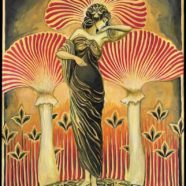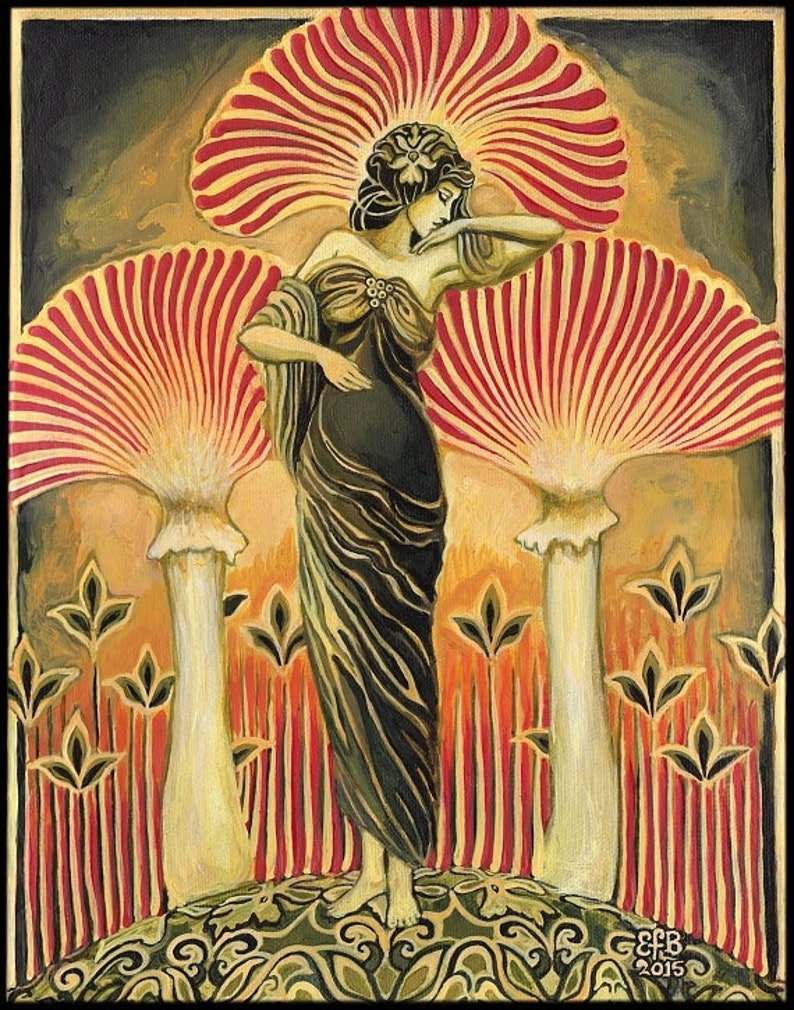Princeton Keynote
Featured image: “Soma Goddess” by Emily Balivet, 2015. used with permission.
I was really pleased to be able to deliver my postponed keynote lecture at the “Idyll and Utopia” conference, organised by graduate students at Princeton University’s German Department on 8-9 October 2021. Although I was sadly unable to give the talk in person, the online conference meant that we were able to record and preserve the talk (see YouTube recording below).
Titled “Idyll & Utopia in the Era of Ecocatastrophe: Elemental Utopian Becomings,” the keynote considered how the image of utopia is being reformulated in our contemporary moment of ecocatastrophe. In recent years, scholars have advocated a process-oriented approach to conceptualising the utopian impulse, as differentiated from the literary genre of utopia understood as imagining (more) perfect worlds in other times and places. However, the posthuman and nonhuman dimensions of utopian becoming have been overlooked in recent utopian theory; at a time when we urgently need to galvanise our readings of hopeful post-anthropocentric perspectives.
The talk asked what an elemental analysis of nonhuman agents such as the lithic and the mycological adds to our understanding of contemporary utopian becomings. I argue that an elemental analysis of utopian becoming reveals the residual lingering of older utopian genres and modes, alongside new materialist interventions into environmental, infrastructural, and ecological entanglements. Drawing on Ernst Bloch’s theorisation of the hope principle, I considered productive examples of what I call “elemental non-contemporaneity” within contemporary fiction, TV series, multimedia artworks, installations, and queer and black utopian theory.
The material for the keynote was drawn from two work-in-progress chapters of my second monograph, Hopeful Inhumanism: The Elemental Aesthetics of Ecocatastrophe, which examines strangely hopeful moments of inhuman collaboration within the elemental contexts of the lithic, the mycological, the arboreal, and the hydrological. Focusing on novels, films, TV series, artworks, and sculpture primarily produced since 2010, the book explores works such as N. K. Jemisin’s “Broken Earth” trilogy, Jeff VanderMeer’s weird fiction, Wangechi Mutu’s multimedia artworks, J. G. Ballard’s ecocatastrophe fictions, Jason de Caires Taylor’s underwater sculptures, Lars von Trier’s apocalyptic cinema, Tade Thompson’s mycopunk, and Seana Gavin’s fungal collages.
You can watch a recording of the keynote below or on my YouTube channel.








 Dr Caroline Edwards is Senior Lecturer in Modern & Contemporary Literature at Birkbeck, University of London. Her research and teaching specialisms are in 21st century literature and critical theory, science fiction and post-apocalyptic narratives, Marxist aesthetics, and utopianism.
Dr Caroline Edwards is Senior Lecturer in Modern & Contemporary Literature at Birkbeck, University of London. Her research and teaching specialisms are in 21st century literature and critical theory, science fiction and post-apocalyptic narratives, Marxist aesthetics, and utopianism.
Follow / Contact